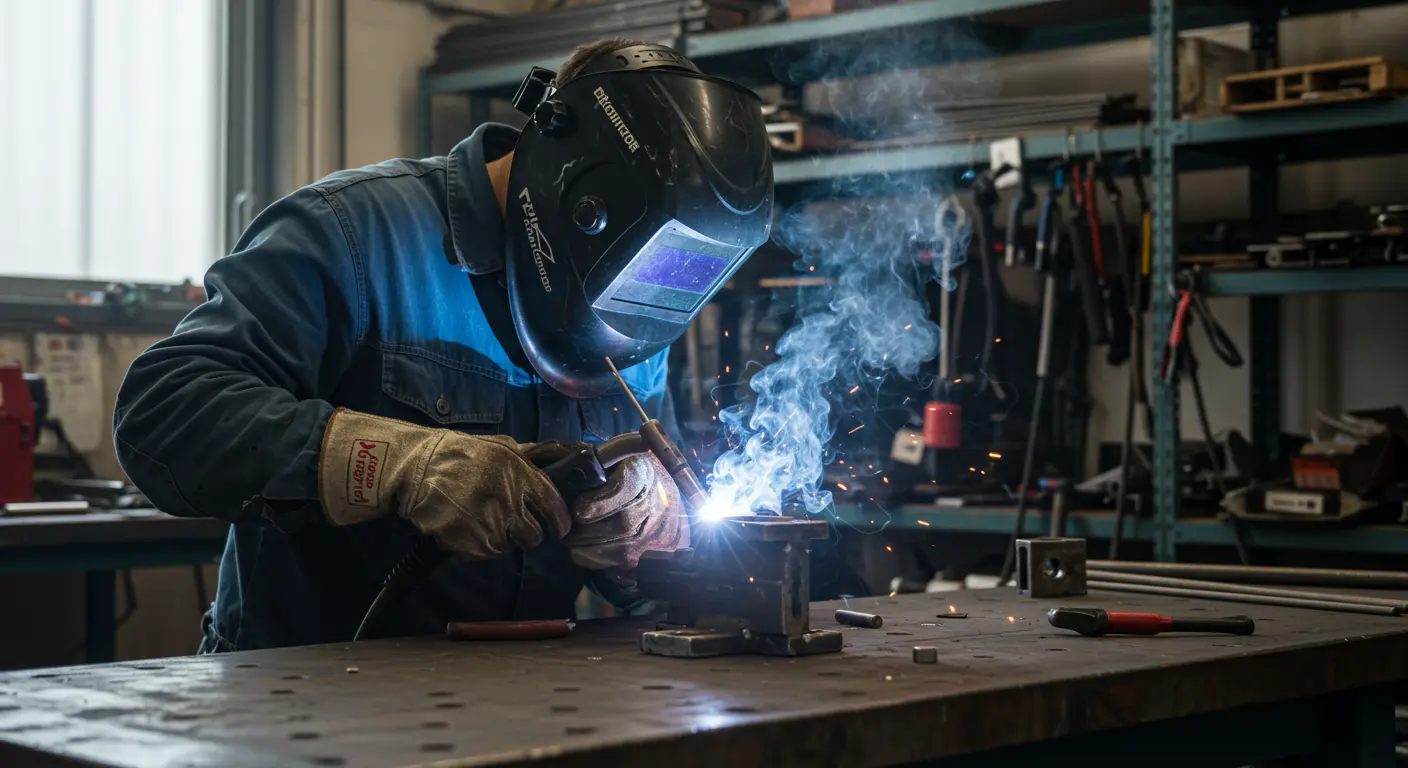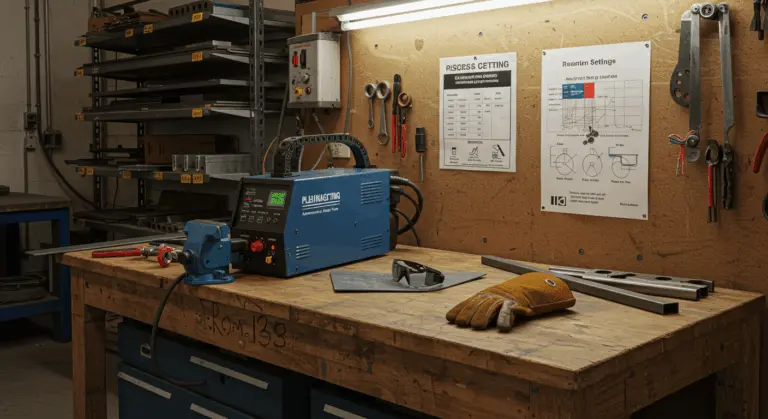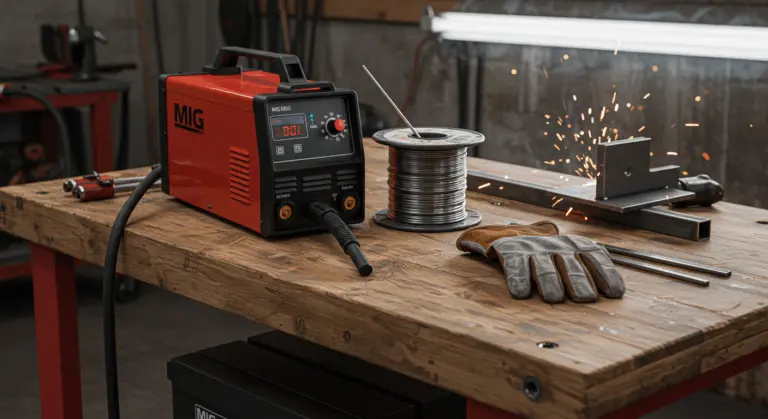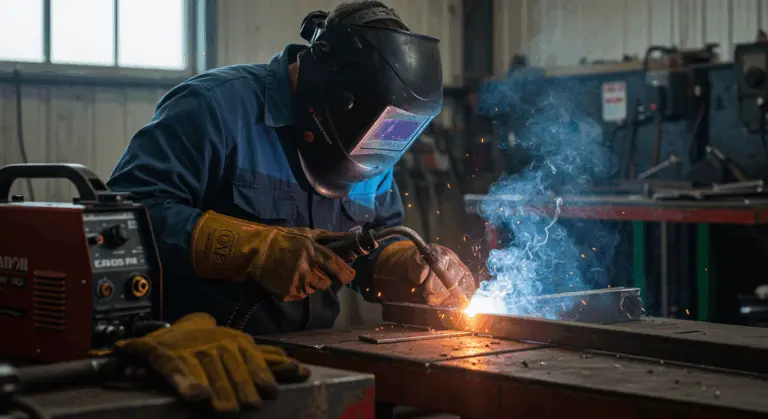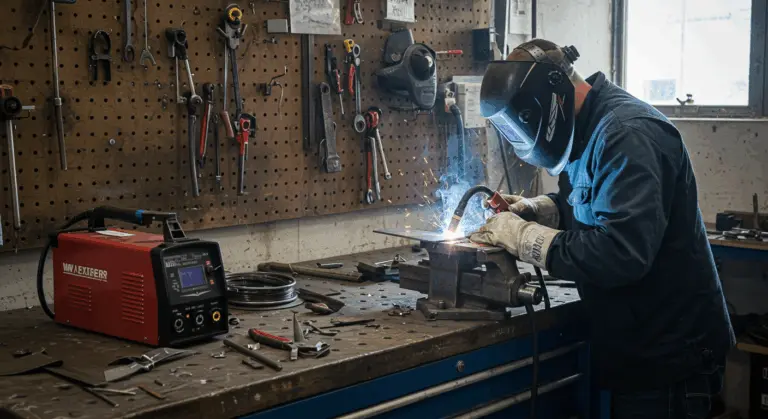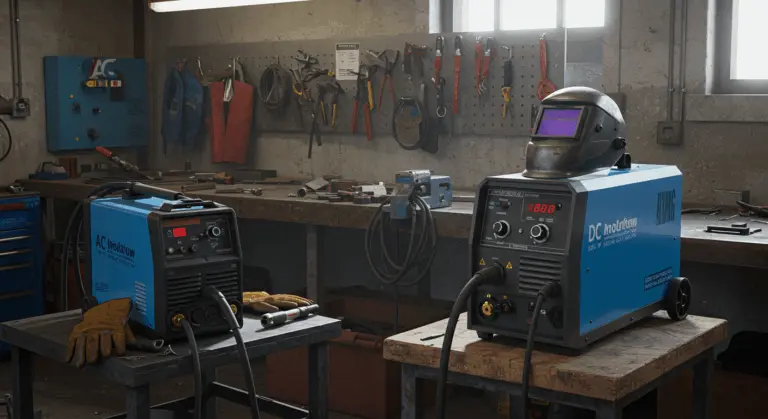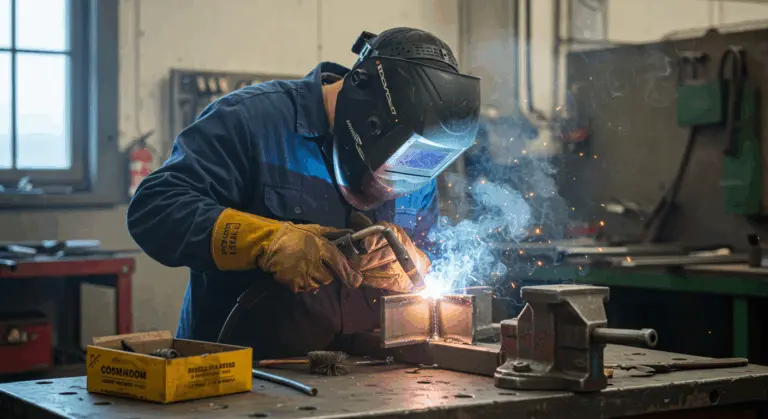What is the Optimal Electrode Angle in Welding?
The optimal electrode angle typically ranges from 15 to 30 degrees in the direction of travel, striking an ideal balance between penetration depth, heat distribution, and weld bead formation. For flat groove welds, welders generally maintain a 90-degree work angle, while fillet welds benefit from a 45-degree work angle to ensure even heat distribution across both surfaces.
Mastering the correct electrode angle is essential to producing high-quality welds. Even minor deviations can significantly affect weld strength and structural integrity.
Understanding the Importance of Electrode Angle
Factors Influencing Electrode Angle Selection
-
Joint Type: Fillet welds typically require a 45-degree work angle for even heat distribution, while groove welds use a 90-degree work angle with a 10-15 degree travel angle.
-
Material Thickness: Thicker materials often need a sharper travel angle for deeper penetration, whereas thinner materials require a more moderate angle to prevent burn-through.
-
Welding Position: Flat, horizontal, vertical, and overhead positions each demand specific angle adjustments to manage the effects of gravity on the molten weld pool.
-
Welding Process: The optimal angle can vary between Stick, MIG, and TIG welding, as each process has different heat input characteristics and handling requirements.
How Does Electrode Angle Affect the Welding Process?
Electrode angle directly controls for how heat and filler material interact with the base metal. A sharper travel angle concentrates thermal energy, driving deeper penetration into thicker materials. Conversely, a wider angle distributes heat more broadly, creating a flatter, wider bead profile.
Role of Electrode Angle in Heat Distribution
When joining materials of varying thicknesses or thermal conductivities, welders adjust the electrode angle to direct additional heat toward the thicker or more thermally conductive material. This technique ensures balanced heat absorption and prevents uneven fusion.
Influence on Weld Bead Formation
Electrode angle shapes the weld bead’s geometry—its width, height, and penetration profile. A steeper travel angle typically yields a narrower, more convex bead with enhanced penetration depth. A shallower angle produces a broader, flatter bead with reduced penetration.
Proper angle control also facilitates smooth metal transfer, enabling slag in stick welding to rise naturally to the surface rather than becoming trapped as an internal defect.
Incorrect angles may cause defects like undercutting or incomplete fusion, creating dangerous stress concentration points. The resulting weld profile determines the joint’s performance under various loading conditions.
Adjusting Electrode Angle for Different Welding Positions
-
Flat Position: For fillet welds, use a 45-degree work angle. For groove welds, use a 90-degree work angle with a 10-15 degree travel angle.
-
Horizontal Position: Maintain a 45-degree work angle but slightly reduce the travel angle to counteract gravity and prevent the weld pool from sagging.
-
Vertical Position: Welding uphill (vertical up) requires a slight travel angle to support the molten metal. Welding downhill (vertical down) often uses a steeper travel angle to increase speed and reduce heat input.
-
Overhead Position: Use a reduced travel angle of 5–10 degrees to maintain control of the weld pool and ensure proper fusion against gravity.
Common Mistakes with Electrode Angle in Welding
Common electrode angle mistakes—particularly inconsistency or incorrect positioning—may cause weld defects that compromise structural integrity.
Avoiding Inconsistent Weld Bead Patterns
Inconsistent weld bead patterns indicate of improper electrode angle technique. These irregular formations—marked by fluctuating width, height, or ripple patterns—not only compromise visual appeal but often reveal deeper fusion and strength issues.
This challenge is especially important in TIG welding, where precision heat control is essential. Developing muscle memory through deliberate practice helps maintain consistent angles automatically.
To enhance consistency, establish proper body positioning and brace your welding hand or arm against the workpiece or a stable surface. This eliminates unsteadiness and provides a reliable reference point.
Preventing Molten Metal Spatter
To prevent spatter, welders must manage three key factors:
-
Electrode Angle: Maintain a consistent travel angle of 15–30 degrees. Fluctuations disrupt the arc and cause molten metal to spray.
-
Arc Length: Keep a stable arc length, roughly equal to the electrode’s diameter. An arc that is too long will cause spatter.
-
Welding Parameters: Select the correct current, voltage, and wire feed speed for the material. Incorrect settings will generate spatter even with perfect technique.
Correcting Work Angle for Better Penetration
Inadequate penetration is a serious defect that weakens the joint. To remedy this, employ a steeper travel angle (approximately 15 degrees) to concentrate the arc’s force and drive heat deeper into the base metal.
Warning signs of poor penetration include a high, narrow weld bead with insufficient fusion at the toe areas. When you observe these characteristics, steepening the electrode angle is the best way to fix this.
Proper work angle also prevents related defects like undercutting and arc blow, ensuring the weld delivers the full structural strength demanded by the application.
Best Practices for Holding the Electrode
Mastering proper electrode holding technique is key to maintaining optimal angles. The objective is establishing stable, controlled motion that channels arc force directly into the joint while preserving clear visibility of the weld pool.
A fundamental stability technique involves bracing your welding hand against a solid object whenever feasible. This creates a reliable pivot point that minimizes hand tremors and fatigue, enabling consistent angles during extended weld passes.
An uncomfortable grip inevitably leads to fatigue and compromised angle control. Welders must discover a grip style that delivers precise control while minimizing physical strain.
Grip Techniques for Steady Welds
Two main grip styles are used: the pencil grip and the hammer grip. The pencil grip offers excellent precision for intricate work like TIG welding, while the hammer grip gives better stability for extended welds, particularly in stick welding applications.
Proper body positioning is also important. A comfortable, well-balanced stance prevents muscle strain and enables smooth, natural arm movement, which helps maintain consistent electrode angle maintenance.
Maintaining Consistent Arc Length
Maintaining consistent arc length—the critical distance from electrode tip to workpiece—is as important as electrode angle. The optimal arc length typically equals the diameter of the electrode’s core wire.
Arc length control begins at the moment of arc initiation. When starting the weld, the electrode should briefly contact the workpiece, then be swiftly withdrawn to the proper distance, establishing a stable electric arc.
Common arc length errors significantly impact weld quality:
-
Too Short: A short arc can cause the electrode to stick to the base metal, resulting in a “cold” weld with poor fusion.
-
Too Long: A long arc produces excessive spatter, porosity, and a weak weld with insufficient penetration.
Positioning the Tip of the Electrode Correctly
The electrode tip’s extension beyond the gas nozzle (in MIG or TIG welding), termed stick out, also significantly impacts quality. Excessive stick out compromises gas shielding and promotes oxidation, while insufficient extension restricts visibility. An extension of 1/8 to 1/4 inch usually works best.
Frequently Asked Questions (FAQs)
What is the ideal electrode angle for a fillet weld?
A 45-degree work angle works best for distributing heat evenly across both surfaces. Combine this with a 10-15 degree travel angle for optimal results. For horizontal welds, slightly reduce the travel angle to prevent weld pool sagging.
How does electrode angle affect penetration?
A steeper travel angle (approaching 15 degrees) concentrates heat energy and greatly increases penetration depth. A shallower angle (closer to 30 degrees) distributes heat more broadly, creating a wider bead with reduced penetration.
Should the electrode angle change for overhead welding?
Absolutely. Reduce the travel angle to 5–10 degrees to control the molten weld pool against gravity’s pull while maintaining adequate penetration depth.
What causes excessive spatter during welding?
Spatter typically results from incorrect electrode angle, inconsistent or excessive arc length, or improper current settings. Maintaining a steady 15-30 degree travel angle combined with a short, consistent arc length helps prevent spatter prevention.
How can I maintain a consistent electrode angle during long welds?
Establish a stable, comfortable body position as your foundation. Brace your welding arm or hand against the workpiece or a sturdy bench to create a reliable pivot point. This approach minimizes fatigue and eliminates unsteadiness. For exceptionally long welds, consider segmenting the work into manageable sections.

